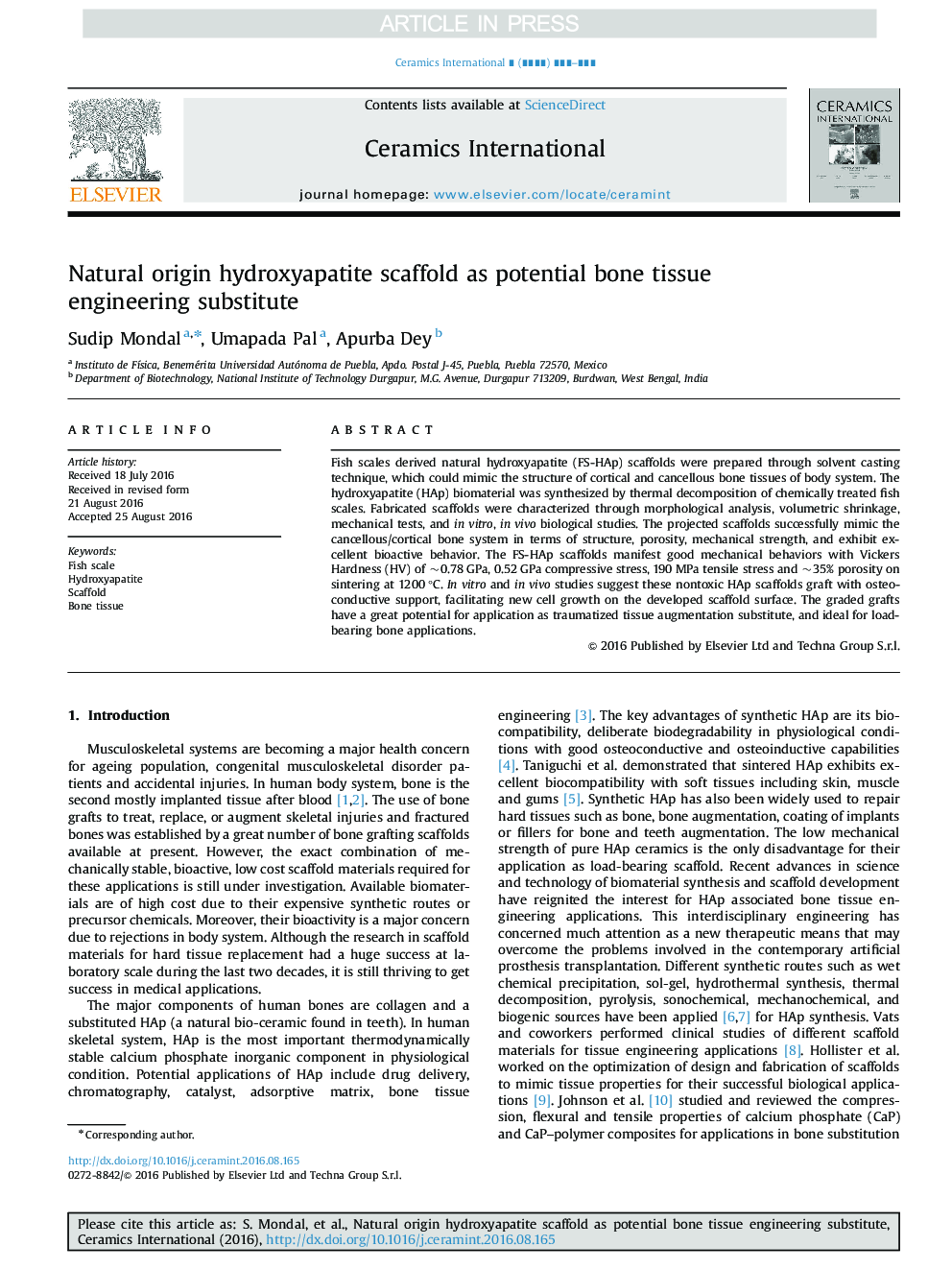| Article ID | Journal | Published Year | Pages | File Type |
|---|---|---|---|---|
| 5439303 | Ceramics International | 2016 | 9 Pages |
Abstract
Fish scales derived natural hydroxyapatite (FS-HAp) scaffolds were prepared through solvent casting technique, which could mimic the structure of cortical and cancellous bone tissues of body system. The hydroxyapatite (HAp) biomaterial was synthesized by thermal decomposition of chemically treated fish scales. Fabricated scaffolds were characterized through morphological analysis, volumetric shrinkage, mechanical tests, and in vitro, in vivo biological studies. The projected scaffolds successfully mimic the cancellous/cortical bone system in terms of structure, porosity, mechanical strength, and exhibit excellent bioactive behavior. The FS-HAp scaffolds manifest good mechanical behaviors with Vickers Hardness (HV) of ~0.78 GPa, 0.52 GPa compressive stress, 190 MPa tensile stress and ~35% porosity on sintering at 1200 °C. In vitro and in vivo studies suggest these nontoxic HAp scaffolds graft with osteoconductive support, facilitating new cell growth on the developed scaffold surface. The graded grafts have a great potential for application as traumatized tissue augmentation substitute, and ideal for load-bearing bone applications.
Related Topics
Physical Sciences and Engineering
Materials Science
Ceramics and Composites
Authors
Sudip Mondal, Umapada Pal, Apurba Dey,
